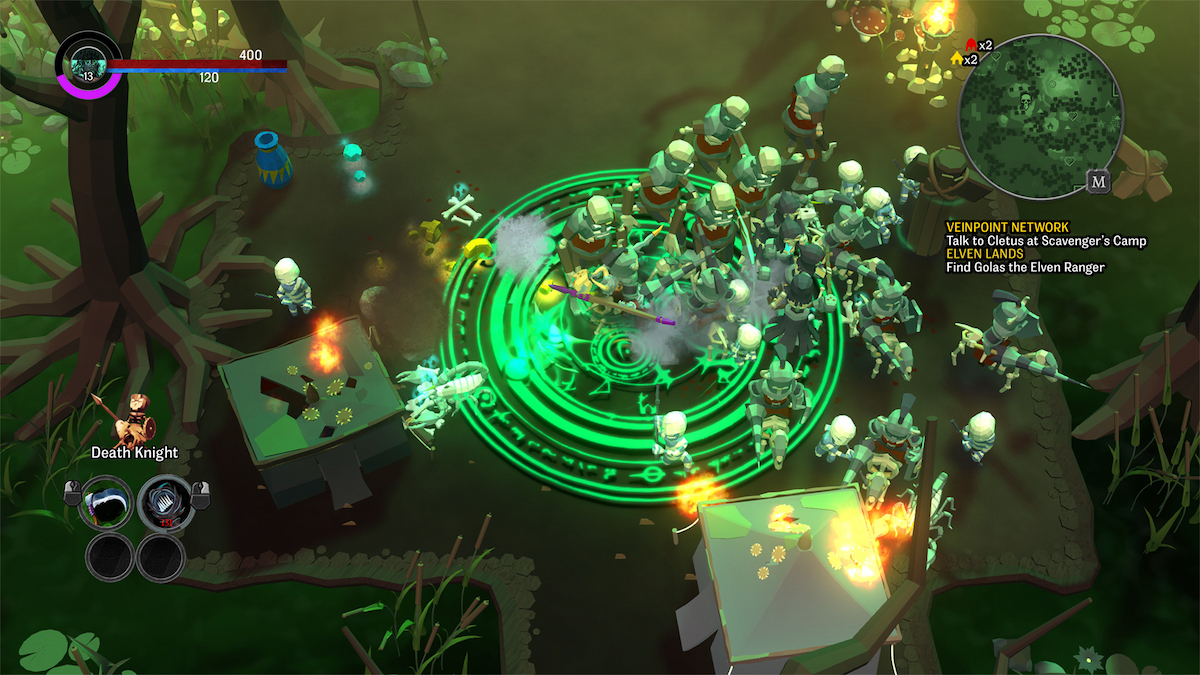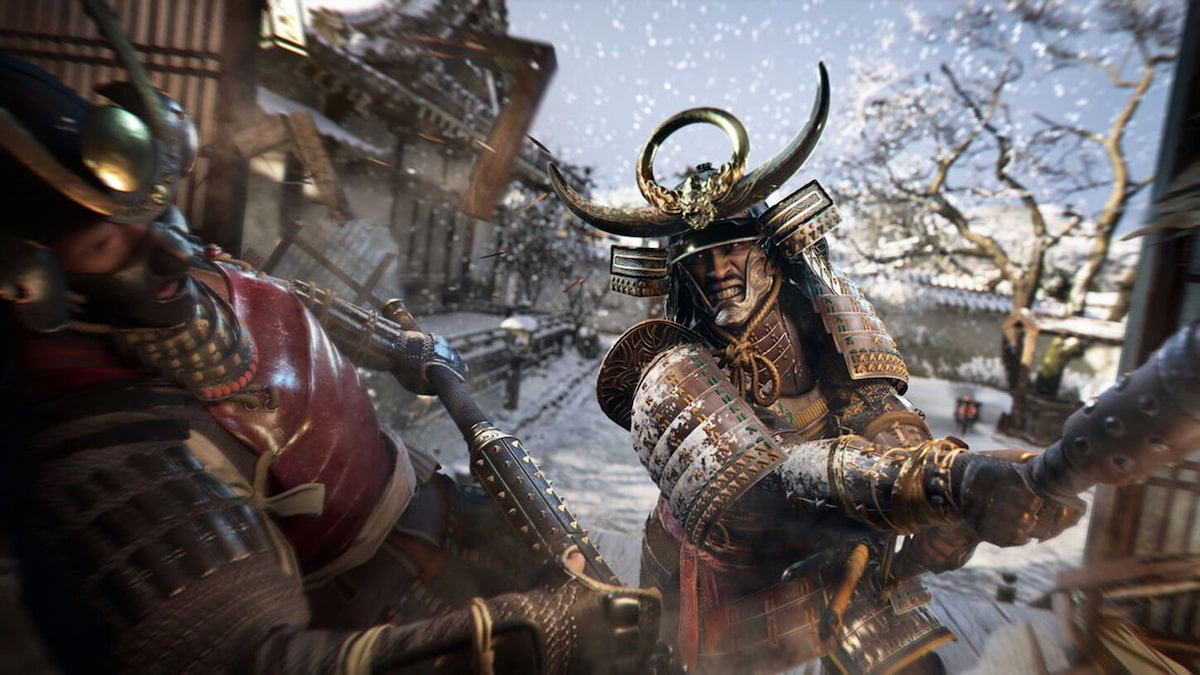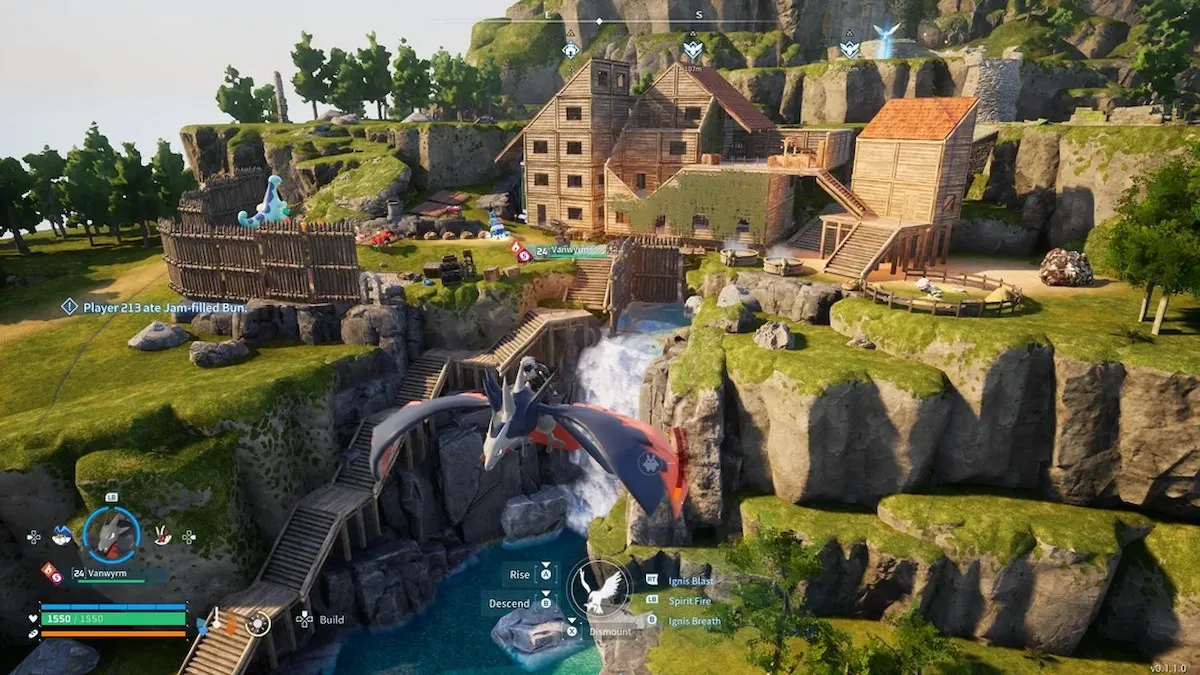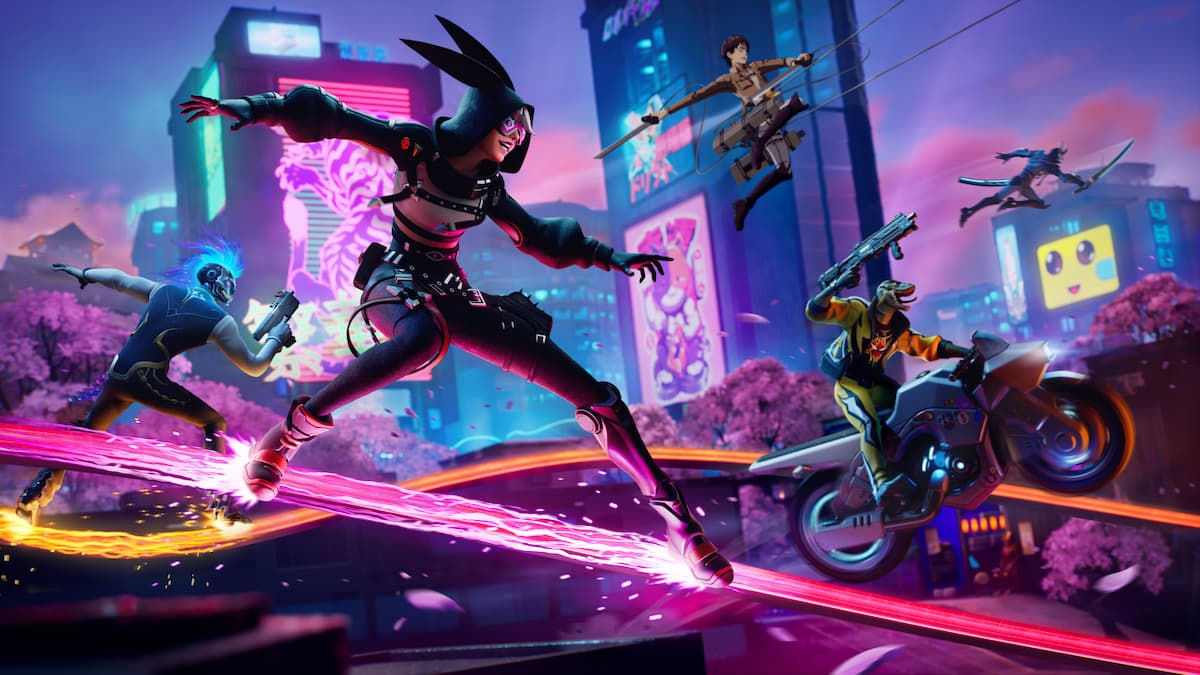Marvel: Ultimate Alliance
Raven Software had previously established themselves as creators of fun superhero co-op games with the previous X-Men Legends titles. But while the X-Men does have a large, diverse roster that could easily take up multiple games with new characters each title, they’re all pretty narrow. At some point, Raven and Activision were going to have to think outside the Xbox and feature all of the Marvel universe, and in 2006, they put out Marvel Ultimate Alliance.
Ultimate Alliance is basically a massive Marvel event comic made interactive, on the scale of Fear Itself, Infinity, or Avengers vs. X-Men. It brings together big and noteworthy characters of the Marvel universe for an adventure that puts players in the shoes of their favorites. Ever wanted to play as Wolverine and Storm alongside big universe heavy hitters like Spider-Man and the Incredible Hulk? Ultimate Alliance was the game for you. Wished Deadpool could slice robots with Blade and see Thor throw his hammer at MODOK? Ultimate Alliance let you do that. Dr. Doom brought together various villains for the Masters of Evil to steal Odin’s power, and in return, Nick Fury calls on every hero imaginable to combat this threat.
Ultimate Alliance is pretty much the same X-Men Legends formula–pre-rendered cinematics, loading screens that look like a comic book cover, four player dungeon crawler, five act structure–and applies that to the overall Marvel Universe. It maintained the classic, fun dungeon crawler feel from the previous X-Men Legends games. There were still some issues held over from the previous games–the camera was annoying, the story was nothing besides an excuse to string together characters from the Marvel Comics, some enemy types had cheap attacks–but it delivered on the gameplay and star power. The sequel, not so much. Sigh, if only they made a third game…
Injustice: Gods Among Us
Everyone remembers Mortal Kombat vs. DC Universe from 2008. They may not be all that fond of it, but its existence led to Warner Bros. buying Mortal Kombat developer Netherrealm Studios and putting out Injustice: Gods Among Us in 2013. And to be fair, there’s nothing new about a fighting game featuring popular comic book characters. Just look at Marvel vs. Capcom and how that’s been doing for years. A superhero game about people in weird costumes beating the absolute mess out of each other is nothing new, but it hasn’t been done quite like Netherrealm has done it.
The equally great comics can fill in the backstory for you if you’re interested, but all you need to know about Injustice’s story going in is that Superman goes evil and all New World Order on the planet. His dark turn creates a divide between the Justice League and other big players in the DC universe, and the only way to end this five-year long conflict is to beat the crap out of each other. The Batman in the dark universe pulls the Justice League from the good dimension over to help him stop his Superman. What follows is a 12-chapter adventure of confusion, betrayals, and sacrifices that any DC reader has come to expect. And even if you aren’t big on comics, you’ll find that this surprisingly in-depth and rewarding story is the framework for an equally rewarding fighting game.
Even though it lacks the gore and X-Ray finishers of Netherrealm’s other fighter, the one-on-one brawls are still brutal thanks to special moves like Batman summoning his Batmobile to run his enemies over or Superman punching his opponent into orbit and then smashing them back where they last stood. DC’s heroes may not be able to kill, but you’ll have a hard time believing that with some of the Brutality attacks they’ve got under their sleeves. A fun and diverse set of characters helps nail the superhero brawl that we’ve all seen play out in comics and cartoons over the years, and the relative ease of its mechanics have helped elevate Injustice into one of the best fighting games of recent years. If nothing else, it’ll help settle arguments about if Batman could kick Lobo and Doomsday’s asses.
Steven Universe: Attack the Light
Up until recently, licensed games were given a bad rep, and it was hard to argue in favor of them. Most were bad tie-ins to big movies and would offer $5 off the ticket price of the film. For TV shows, this was even more damning, because it meant that it was an easy cash-in with repetitive gameplay and a flimsy reason to visit famous characters and locations from the show. These days, the bad licensed games get sent to a handheld platform like the 3DS with little fanfare, while the great or at least decent ones get a console release.
Don’t be fooled by it being an iOS game based on a show from Cartoon Network. Steven Universe: Attack the Light is an awesome game. This isn’t one of those shows where it just didn’t make much sense to have a game exist. The show itself has so many video game references, even in its basic premise of three aliens called the Crystal Gems (and Steven, a human-Gem hybrid) protecting Earth and traveling to different lands to fight monsters. With references of old school titles like Final Fantasy and Chrono Trigger to more recent affairs like Animal Crossing and Legend of Zelda: Wind Waker, it was only an eventuality there’d be a video game. Fortunately, developer Grumpyface Studios delivered, and the resulting game is fantastic.
If you’ve played the Mario RPGs, you’ll be right at home here with Attack the Light. Like those games, you travel to different lands on a 2D plane, but thankfully without any platforming. The turn based combat is pretty Mario & Luigi-esque, with blocks, special attacks, and items for you to distribute to each of the characters as buffs. Steven serves as support while the Crystal Gems do the actual battle, and they all handle quite nicely in combat. The touch screen controls work perfectly and rarely, if ever, get in the way of selecting an attack or an enemy. Despite being $3, it doesn’t mean the developers have skimped on the content, with five dungeons and five levels a piece, plus two secret areas and a boss. Attack the Light isn’t the most extensive RPG in the market in terms of weapons or items, but when it’s priced at $3 and based on one of the best cartoons on right now, you can’t go wrong with it.
Adventure Time: Hey Ice King! Why’d You Steal our Garbage?!!
Like Steven Universe, Adventure Time is chock full of video game references. Heck, one of its episodes is set inside a video game, and one character actually is a video game console. Creator Pendleton Ward has said that video games influenced the show, so it stood to reason that a video game would be one avenue that the property would stretch out to. Second to if it would be a good game, the big question with Adventure Time: Hey Ice King, Why’d You Steal Our Garbage?! (yes, that’s seriously the full title) was what kind of game it would be.
Next to Disney, Cartoon Network is the one cartoon channel with kids programming that could best be suited for a video game format. Their shows are so out there and reach new levels of absurdity with each episode that they could reasonably fit in well in the gaming space. The problem has been that the games themselves were in genres that didn’t feel all that true to the material; Teen Titans was a beat-em-up, and the Ben 10 games switched genres every other game. Thankfully, WayForward decided that a game about a boy and his shapeshifting dog in a nuclear apocalypse would be the best property to turn into a Zelda game.
Adventure Time has had five video games come out for it, but the original is where it’s at. Each of the Adventure Time games has been influenced by a famous game, but Legend of Zelda is the one most have been drawing from. Hey Ice King, Why’d You Steal Our Garbage is very much in the vein of Legend of Zelda II to the point where you wonder if WayForward just asked for the Zelda II code and added Adventure Time on top of it. Switching from top-down Ooo traversal to side-scrolling between iconic locations provides a sense of scale, and the Metroidvania dynamic between Finn and Jake works nicely. Combined with the series’ trademark humor kept perfectly intact, though the lack of voice acting is a bummer. Until there’s an Adventure Time game on consoles, this is the best title fans could ask for.
Ultimate Spider-Man
It was a massive surprise when Ultimate Spider-Man hit shelves back in 2005. While it was based on the popular comic of the same name, Spidey’s games had typically been reserved for movie tie-ins or based on the 90s cartoon up until then. That it was also meant to be in canon with the comic was intriguing, because had the game been a steaming pile, it would’ve been easy for the writers to retcon the game out of canon. That is, strangely enough, sort of what happened with the comic’s War of the Symbiotes arc years later, as that adapted some elements from the game while just flat out not acknowledging other parts of it.
The game’s biggest selling point was the ability to play as both Spider-Man and his complete opposite, Venom. In the Ultimate universe, these two characters are connected more than they are in the 616 universe; Peter Parker and Eddie Brock’s parents were scientists working together. Their big experiment was a symbiotic suit that was designed to cure cancer, but their parents died before they could finish it. Peter finds the suit and it bonds to him, creating the classic Black Suit comic readers know that while looking cool, also increases his strength and aggression. Peter gets the suit off of him, but it bonds to Eddie instead, and combined with Peter’s memories and Eddie’s hatred for both of Peter’s identities, turns Eddie into Venom. The game picks up months after Venom and Peter’s fight in issue 39 of Ultimate Spider-Man the comic.
Thankfully, Ultimate Spider-Man had the comic’s writer Brian Michael Bendis direct and write the game, so the tone of the comics was kept intact. Like Spider-Man 2, Spidey had to manually attach webs to swing around, and getting around the city still provided the satisfaction of being Spider-Man. It was hard not to feel like the wall-crawler, divebombing into the New York streets before shooting a web and swinging away. The combat, while not perfect, was fun and let you stun lock enemies by air-kicking them to your heart’s content. Letting players become Venom also proved to be beneficial to the game; the depleting health mechanic added a sense of urgency while making the “be predatory” part of the game’s tagline be true in more ways than one. His abilities and movement may be slower and not as fancy as Spidey’s, but the big guy can still throw down and swing like the best of them. With the arrival of Miles Morales as the new Spider-Man in the Ultimate universe, you’d think that there’d be a sequel at some point in the past decade. That sadly hasn’t been the case, leaving gamers with a great game that had potential to be amazing in future installments.
X-Men Legends II: Rise of Apocalypse
The X-Men and the Brotherhood of Mutants have never gotten along. This is an unavoidable fact of the X-Men comics all the way back to their creation, and it’s not just because of the split between their respective founders Charles Xavier and Magneto. Nearly everyone in the X-Men is the mirror opposite of someone in the Brotherhood; Wolverine is Sabretooth with heart of gold, Toad is a dirtier Nightcrawler who doesn’t let hide his appearance, and the list goes on and on. Yet there are times when these two different factions find themselves working together, usually for the cause of stopping something bigger than them. In X2: X-Men United, it was a human military leader who wanted to use Xavier’s mental powers to kill all mutants. In X-Men Legends II, it’s because Apocalypse is kidnapping mutants from both groups in order to drain their powers and cleanse the world of the weak. Sigh, Wednesdays.
While Apocalypse’s threat does grow stronger throughout the five act game, the biggest threat may be the union of the X-Men and the Brotherhood in the first place. During mission briefings, the tension between both groups is thick. Juggernaut will flirt with Jean Grey in front of Cyclops, Wolverine will threaten to skewer Toad, and it’s basically a miracle that you’re able to group members from both groups together in gameplay without someone ending up dead. It’s made abundantly clear that nothing short of the universe collapsing will make the X-Men and Brotherhood become friends once this is over, and it is somewhat refreshing to play a co-op game where all the playable characters could end up being people who openly dislike each other. It’s a shame that the game doesn’t have unique dialogue, Dragon Age style.
The addition of the Brotherhood adds some fun new characters to the X-ranks; Magneto and Scarlet Witch are great defenders, Juggernaut more than lives up to his name, and surprisingly, Toad ends up being one of the more fun characters to the roster this time around. Just like the first, X-Men Legends II succeeds at being an addicting dungeon crawler. No matter which characters you pick for your party, the gameplay is fun and rewarding. Each character’s selection of mutant powers is great, and using them in tandem with the other party members has that comic book feel of superheroes working in tandem. With 15 characters to pick from, you’ve got plenty of variations and combos to figure out, and even small additions like gear can change things up. Whether you go it alone or with friends on the couch or online, this superhero game is more than worthy of being called super.
Batman: Arkham Games
Each of the Arkham games are pretty fun in their own right (yes, even Origins), but the original in particular is spectacular. There was no bigger surprise, no licensed game with plenty of odds stacked against them than Arkham Asylum. This didn’t just prove that you could make a great Batman game, or even that you could make a fantastic licensed game; Arkham Asylum is the game that has spawned plenty of imitators and influenced many games that have taken parts of it and tried to make it into their own thing. It’s the game that defines the tail end of this last generation of consoles, and for good reason.
When Arkham Asylum was first unveiled in 2007, people were skeptical of an actually great Batman title. Sure, there were the old ones in NES days that were solid, but after multiple duds in the PS2/Xbox era, hope was dwindling. Certainly not helping was the fact that Rocksteady was a super unknown name at the time, having only developed one game beforehand called Urban Chaos: Riot Response. The films are where the Dark Knight thrived, but the odds were massively stacked against him on the gaming front.
Arkham Asylum succeeded mostly because it was the first Batman game to make players feel like Batman, from being a detective to a world class fighter. The freeflow combat system captured the sense of effortless, brutal asskicking that encouraged patience and timing over button mashing, and the stealth hit that perfectly balanced the line between never wanting to get caught while also hoping enemies would wise up and use new tactics to kill you. More vital to the game’s success was its blend of the old 90s cartoon with the modern tone that the Nolan films and comics have provided. Simply put, Kevin Conroy and Mark Hamill are Batman and Joker for most nerds alive these days, and getting them for the voices was a huge victory. Their voice acting, along with the creepy and isolating environment of Arkham Asylum and stellar selection of characters from the Batman mythos, came together for an engrossing and captivating the story. The sequels have expanded on Asylum’s amazing formula, for better and worse. With Arkham Knight shortly incoming, you can’t go wrong heading into that asylum.



















Updated: Jun 22, 2015 03:46 pm